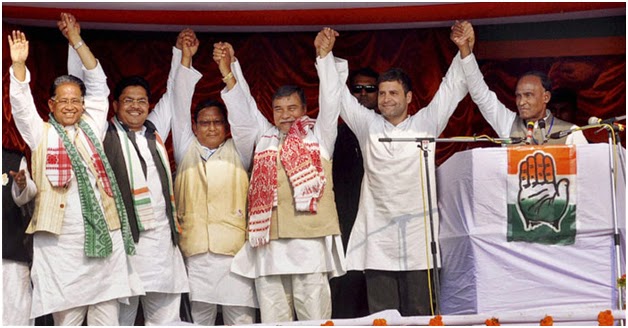Coalition politics and india in a
backdrop of 16th lok sabha election
The 16th lok sabha election
will be held in 9 phases in 29 states and 7 union territories of india. There
are total 543 seats in lok sabha election
.the magic figure for formation of a government is 272. There are more than
600 political parties contesting in the 16th lok sabha. The major
two national based party are Bharatiya
Janata Party (BJP) and National congress. There are too many regional political
parties across the country like
Trinamool Congress , All India Anna Dravida Munnetra Kazhagam (AIADMK) , Janata
Dal (United), Biju Janata Dal (BJD), YSR
Congress , Rashtriya Janata Dal , Telugu Desam Party , Telangana Rashtra
Samithi , Communist party of India (Marxist) CPI(M),
CPI , RSP, FORWARD BLOC, Aam Admi Party and etc.
There are many parties in the country
those who are not contesting in the election but they are supporting the other
candidate like in the constituent of Darjeeling Gorkha Janamukti Morcha is supporting the
candidate of Bharatiya
Janata Party (BJP).There are two types of coalition politics are formed one is
post coalition politics and the other
one is pre coalition politics.
FEATURES
OF COALITION POLITICS
The
following are the features of coalition politics in India particularly since
1986.
1. It has been quite evident that today no single
national level party is in a position to get a majority in elections and to
form a government, at the centre it is expected that national level political
parties will now become increasingly depended on the other political parties to
form a central government.
2. Coalitions with regional parties. It also appears
that in future pre poll alliance will be made after the election results only
limited political changes will be made in these.
3. Since a coalition government is formed on the basis
of a mutually agreed common programme and it sustains itself through consensus
decision making. The role of political of consensus will gain strength in the
Indian politics.
4. It is now also certain that in every coalition
government. The leadership role will fall in the hands of the single largest
constituent of the coalition alliance.
5.
Three distinct alliance groups appears to be emerging in Indian politics BJP
led alliance, congress led alliance and left front alliance.
Coalition
politics has tended to make the working of the Indian political system in
general and the parliamentary system of governance in particular more complex
problematic and even fluid. It can strengthen the demand for the incorporation
of at least some features of the presidential system in the Indian
parliamentary system of governance. With all of the above mentioned features
and emerging trends the era of coalition politics has really open in the Indian
political system. After having worked through a one party dominant party system
the Indian political system is currently working through a system of coalition
politics under which several political parties are simultaneously sharing power
both at the centre and state levels. Contemporary India has today undergone a
complex and tortuous political transition. The demise of the one party
dominance system has given birth to an era of coalition with the decline of the
congress and in the absence of a national alternative having a countrywide
spread it was logical for the people to repose faith in different parties and
groups some confined to region. For the last couple of decades the Indian
political landscape has been dominated by coalition politics.
The
above analysis of coalition governments at the centre clearly reflects that the
hung parliaments became the norm of the India because of fragmentation in
political parties have demonstrated a shocking lack of ability to create
enduring coalitions. Indian democratic politics so far has been lacking in the
talent and culture of coalition making and coalition maintaining however, NDA
and UPA experience in coalition governance with two major national parties BJP
and congress leading it alternatively has gradually helped in building up a
coalition culture. However coalitions have still a long way to go in as far as
India is concerned. Since there is a coalition pattern at all India level and
state level increasing role of regional parties and social groups gave birth to
coalition governments in India.
Sayantan Duttagupta
M.Sc Media P.G 1




No comments:
Post a Comment